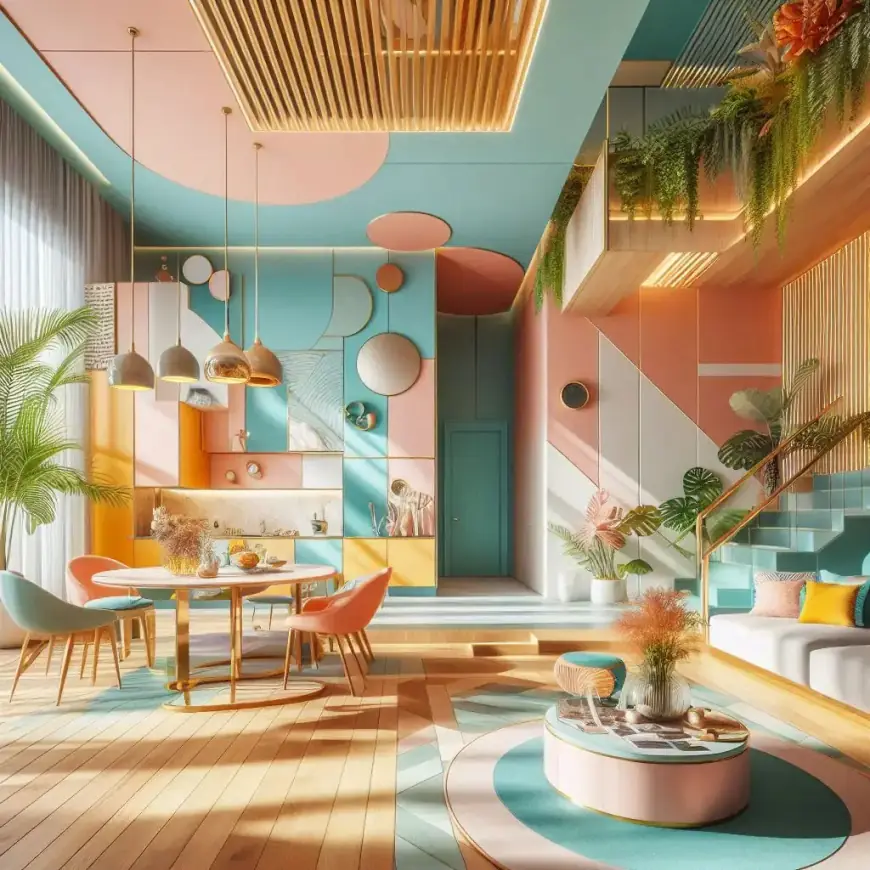Top Interior Design Tips to Transform Your Home: A Guide for Every Room

Interior design is about making a space functional, comfortable, and beautiful. It reflects your style while optimizing every square foot of your home. Here’s an easy-to-follow guide with ideas and tips for achieving a well-designed interior for every room.
1. Start with a Plan
Before jumping into any project, have a clear plan:
-
Assess the Space: Measure the rooms, identify architectural features, and note areas that need improvement.
-
Set a Style: Choose a style that fits your personality, whether it’s modern, rustic, minimalist, or eclectic.
-
Create a Budget: Determine how much you want to spend and prioritize rooms or items that need the most attention.
A cohesive style and budget will keep your design journey organized and focused.
2. Living Room Ideas: Make It Inviting
The living room is where you entertain guests and relax with family. Here are some design tips to make it cozy and functional:
-
Furniture Layout: Arrange furniture to encourage conversation. Place sofas and chairs facing each other, and add a coffee table as the center anchor.
-
Lighting: Use a mix of natural and artificial lighting. Floor lamps, table lamps, and accent lights add warmth and flexibility.
-
Textures and Colors: Add layers with cushions, rugs, and throws. Choose colors that harmonize with your style—neutrals for a calming effect or bold colors for a lively atmosphere.
-
Focal Point: Create a focal point, like a fireplace, a large artwork, or a statement piece of furniture, to anchor the room visually.
3. Kitchen Design: Focus on Functionality
A well-designed kitchen makes cooking enjoyable and efficient. Here are some ways to enhance your kitchen:
-
Optimize Storage: Use cabinets, open shelves, and drawer organizers to maximize storage. Consider pull-out drawers for easy access to pots and pans.
-
Lighting: Ensure good task lighting for cooking areas. Under-cabinet lighting is practical and adds a modern touch.
-
Countertop and Backsplash: Choose materials that are both durable and stylish. Quartz, granite, or marble countertops paired with a stylish backsplash can add a fresh look.
-
Appliances: For a clean, modern look, consider stainless steel or integrated appliances that blend seamlessly with cabinetry.
4. Dining Room: A Place for Gatherings
The dining room can be more than just a place for meals—it’s where you make memories with family and friends. Here’s how to create an inviting dining space:
-
Table and Chairs: Select a dining table that suits the room size and complements your style. Chairs should be comfortable and durable.
-
Lighting: A chandelier or pendant light over the dining table sets the mood. Add dimmers for flexibility.
-
Decor and Accessories: Use a centerpiece, like fresh flowers, candles, or decorative bowls, to add character. Wall art and mirrors can also make the space feel more expansive.
-
Storage: A sideboard or console table can be useful for extra storage and serve as a spot for decor or buffet setups.
5. Bedroom: A Relaxing Retreat
Your bedroom should be a peaceful sanctuary. Here are tips for making it both functional and serene:
-
Bedding: Invest in quality bedding that feels luxurious and comfortable. Layers of pillows and throws can add a cozy look.
-
Lighting: Use bedside lamps for reading, and install blackout curtains to control natural light. Dimmable lights create a relaxing ambiance.
-
Color Scheme: Choose soothing colors like soft blues, greys, or pastels for a calming effect.
-
Storage: A well-organized closet, under-bed storage, or built-in shelving can keep clutter out of sight.
6. Bathroom: Small Space, Big Impact
Even in small spaces, thoughtful design can make a bathroom feel functional and luxurious:
-
Storage Solutions: Use wall-mounted cabinets or floating shelves for a modern, clutter-free look. Organize with baskets and containers.
-
Mirror and Lighting: A large mirror makes the bathroom feel bigger, and bright lighting enhances its functionality.
-
Materials and Fixtures: Choose moisture-resistant materials like ceramic or porcelain tiles. Stylish faucets, showerheads, and hardware can upgrade the look instantly.
-
Color and Decor: Light colors, plants, and minimal decor make small bathrooms feel open and refreshing.
7. Home Office: Productivity Meets Comfort
For a productive and comfortable workspace, keep these tips in mind:
-
Desk and Chair: Invest in an ergonomic chair and a desk that fits your working style.
-
Lighting: Natural light is best for a home office. Add a desk lamp for late-night tasks.
-
Organizational Tools: Use filing cabinets, shelves, and drawers to keep supplies and papers tidy.
-
Personal Touches: Decorate with plants, artwork, or motivational quotes that make the space feel inviting.
8. Children’s Room: Playful and Practical
Kids’ rooms should inspire creativity while being safe and practical:
-
Storage: Use bins, shelves, and baskets to keep toys, books, and clothes organized.
-
Color and Decor: Bright colors and fun themes like animals, outer space, or nature make the room engaging.
-
Furniture: Choose multi-functional furniture, like beds with storage or desks with adjustable heights, to grow with your child.
-
Play Area: Include a designated play area with a soft rug or floor cushions for comfort.
9. Use Colors and Lighting to Set the Mood
Colors and lighting can dramatically change how a room feels:
-
Colors: Warm colors (like reds, oranges) add energy, while cool colors (like blues, greens) create calm. Neutrals can provide a balanced backdrop.
-
Lighting: Combine ambient, task, and accent lighting for a layered effect. Dimmers allow you to control the light levels according to the time of day and mood.
10. Greenery and Decor
Indoor plants breathe life into a space and improve air quality:
-
Plant Choices: For low-maintenance plants, consider snake plants, pothos, or succulents.
-
Decor: Decorate with personal items like photos, travel souvenirs, or art pieces that tell your story and make your home feel unique.
11. Final Tips: Balancing Function and Style
-
Blend Style and Practicality: Every design choice should enhance both the look and functionality of your home.
-
Less is More: Avoid over-decorating to keep rooms open and spacious.
-
Stay Consistent: Use a color palette, materials, and decor that flow naturally from room to room.
Conclusion: Designing a Home You Love
Interior design is a personal journey that reflects who you are and how you live. With these ideas and tips, you can create a home that is not only stylish but also a joy to live in.
What's Your Reaction?
 Like
0
Like
0
 Dislike
0
Dislike
0
 Love
0
Love
0
 Funny
0
Funny
0
 Angry
0
Angry
0
 Sad
0
Sad
0
 Wow
0
Wow
0



















































